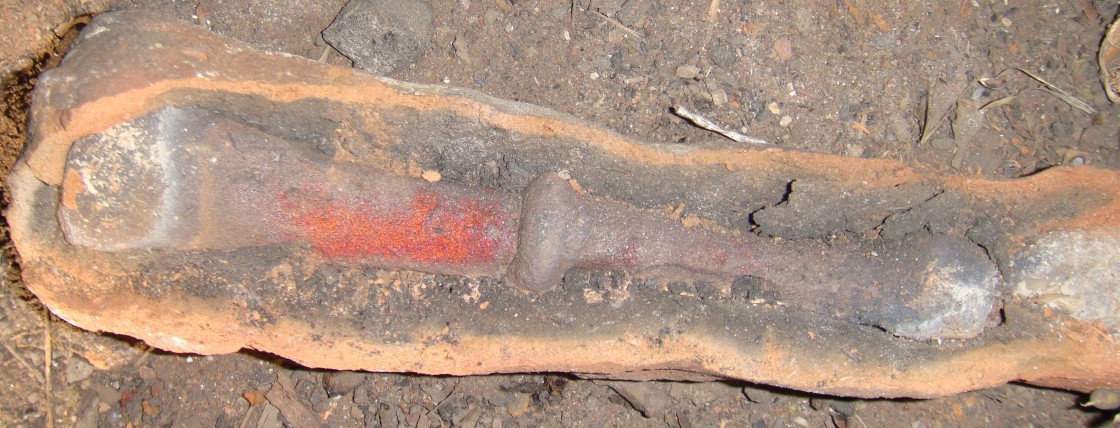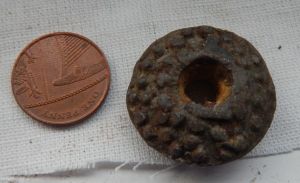And lots of other latten in war gear.
I was browsing through “The medieval inventories of the Tower armouries 1320-1410”, a PhD thesis by Roland Thomas Richardson (Which can be downloaded from the British Library ETHOS service), when I found various mentions of latten. Latten in that period was a copper alloy with mainly zinc and other elements.
Quoting from “Medieval English Industries”, page 82,
“The contract for the mid 15th century effigy of Richard Beauchamp in St Mary’s Church, Warwick, specifies “the best latten”, and analysis has shown this to be a copper-zinc-lead-tin alloy: 84.3% Cu, 9.4% Zn, 2.2% Sn, 1.4% Pb, and the remainder including nickel, iron, antimony, arsenic and silver.”
It is attested as being hard as bronze, and shiny.
Thus one of the uses mentioned by Richardson from the inventories, is to decorate the edge of maille shirts, which you see worn by quite a few re-enactors, the shiny brassiness showing up well against the darker iron or steel. (page 39 of the thesis)
Cap a Pie, who sell maille for re-enactors, sell individual rings for making your shirt or standard look prettier: http://www.capapie.co.uk/index.php?route=product/category&path=59_75
Weirdly though, in the Tower inventories and accounts, there is mention of latten maille shirts! A shirt made completely of latten would not be as strong as iron or steel, so I wonder why. (Pages 41 and 44 of the thesis)
The other use on armour is as a latten border, presumably some sheet riveted onto the iron vambrace (page 78 has a photo)
Latten also crops up as horse armour.
Oddly it is also used, e.g. on page 110, to make fletchings for springald bolts! I presume that they were better able to cope with the stress of use? The other use related to springalds is in 7 nuts of latten, purchased for making 7 springalds. I think the nuts they mean are the ones that hold the long brass rod which is turned to pull back the arms of the springald. Thus they would have been large, strong nuts. (page 111)
Page 167 – There is mention of 10 moulds of latten for casting lead balls for firing from guns. Ten is quite a lot and would enable fairly rapid production, although each mould would surely take a minute or two to cool down when cast into, due to the lead taking a long time to cool.
The title though is a bit of a cheat – what they called brass usually included bronze, the latter word not being around in medieval times. So cannon were made of brass, only they meant the strong 10% tin-copper alloy. There is several mentions of them in the inventories, and usefully, of the people who made them.
Page 166 mentions a small gun of copper purchased from John ‘brazier of Cornhill’ in 1361, and of course by copper they must mean bronze, since only that could take the strain of the gunpowder. Technological terms then were not as definite as they are now, although at other places in the accounts the guns were said to be made of bronze. A brazier was basically a foundryman, someone who cast in bronze or indeed brass, into moulds, whether of stone or clay or suchlike.
The earliest accounts I know of from Scotland of such practise are in the reign of James IV, the 1490’s, when a potter made a mould for casting a gun in. A potter being someone who made metal cauldrons, i.e. pots. There isn’t that much evidence surviving for potters in Scotland, but there must have been some.
So, it is amazing what turns up in peoples research. I urge you all to search through ETHOS to find PhD theses of interest.

